Drinking
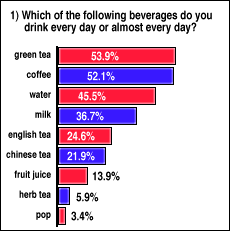 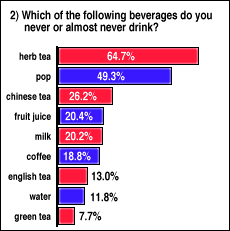 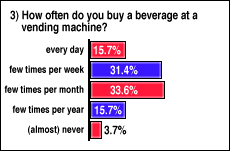 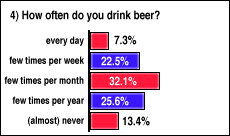 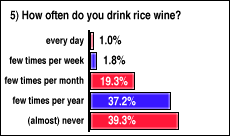  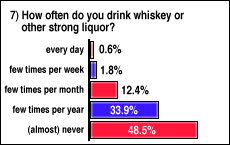 |
Non-alcoholic beverages:
The most popular beverage according to our survey is green tea: 54 percent of the respondents drink green tea on a daily basis while only 8 percent don't drink green tea at all. Second most frequently drunken beverage is coffee, following closely with 52 percent. Green tea and tea in general tend to be more popular among women (59%) than men (49%). The opposite case is true for coffee which is drunken daily by 59 percent of men but only 46 percent of women.
Over a third of the survey participants indicated to drink water (46%) and milk (37%) on a daily basis, followed by English tea (25%), Chinese tea (22%), fruit juice (14%) and herb tea (6%). Pop drinks do not enjoy much popularity in Japan: Only 3 percent of the survey respondents drink them on a daily basis while almost 50 percent indicated to never drink pop drinks at all.
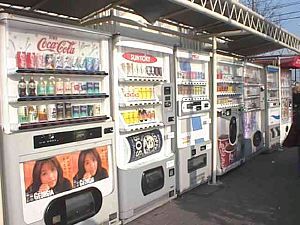
Japan has a very high number of vending machines per capita. Vending machines selling hot and cold beverages can be found alll over the country. The results to our next survey question show that there is a high demand for those machines: Almost one quarter of male respondents indicated to buy a beverage at a vending machine every day. Another 36 percent responded to use them at least once per week, suggesting that every second Japanese men buys beverages at vending machines at least once per week. Women are less frequent users of vending machines, with "only" about one third using them at least once per week. On the other extreme, only 4 percent of the survey participants never use vending machines.
Alcoholic beverages:
The results below only include answers of participants aged 20 years and older.
By far the most popular alcoholic beverage in Japan is beer. 37 percent of male and 22 percent of female survey respondents drink beer at least once per week, 12 percent of men even on a daily basis. On the other hand, only 9 percent of men and 18 percent of women do not drink beer at all.
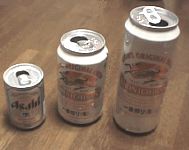
According to our survey, wine is more widely drunken than Japanese rice wine (nihonshu). Wine seems to be especially popular among women: 40 percent of women drink wine at least once per month, compared to only 31 percent among men. Japanese rice wine, on the other hand, is enjoyed by only 16 percent of women and 28 percent of men on a monthly basis. Also the number of people who do not drink rice wine at all (39%) is clearly larger than the number of people who do not drink wine at all (22%).
Strong liquor (40% alcohol content or more) such as whiskey is drunken least frequently among the liquors examined in this survey. A majority of men (56%) enjoys such alcohol a few times per year or month, while 37 percent do not drink it at all. A large majority of women (60%) also refrains from drinking such liquor.
Finally, we examined where alcohol is consumed, i.e. at home, at restaurants/bars or not at all. 10 percent of male and 13 percent of female survey respondents (who are above 20 years of age) indicated to be teetotallers. Among the respondents who drink, 64 percent drink at home and 75 percent drink at restaurants and bars. (The total is over 100% since many people drink both at home and in restaurants). While women clearly prefer the restaurant (79%) over their home (62%), the situation is more balanced among men among whom 71 percent drink at restaurants and 66 percent at home.
Questions? Ask in our forum.

